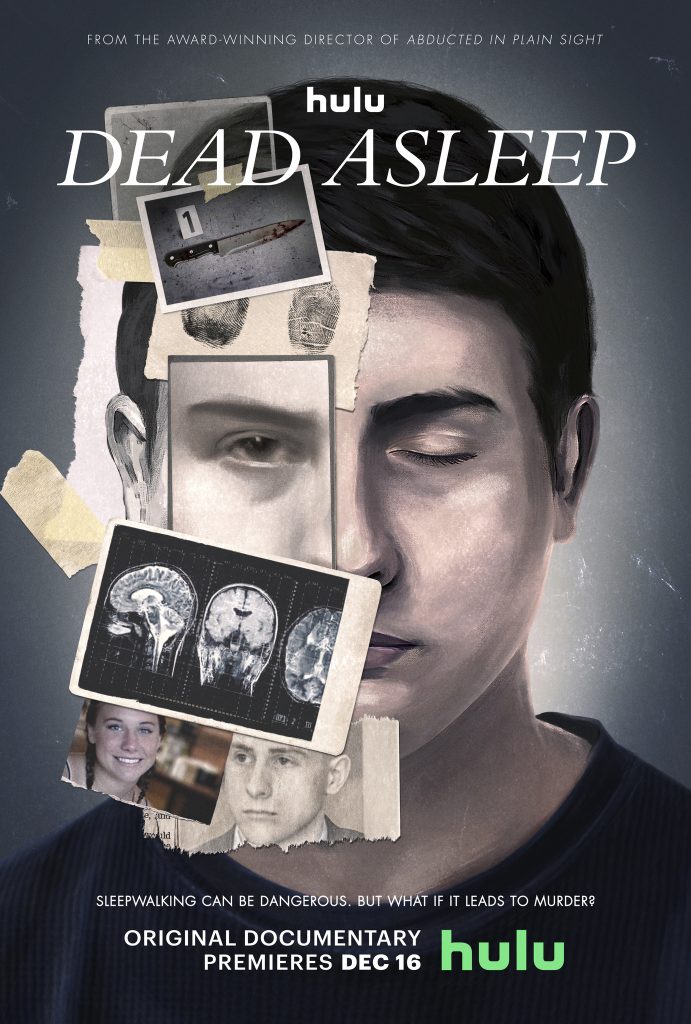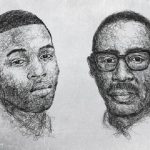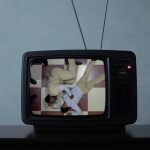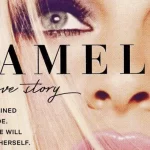Skye Borgman Brings Art to Murder in Hulu’s ‘Dead Asleep’
Skye Borgman’s latest feature documentary, Dead Asleep, tells the story of Randy Herman, a young man accused of killing his best friend in West Palm Beach Florida. A former cinematographer, Borgman brings beauty to a story clouded with the ugliness of ignorance. In 2017 Randy Herman Jr. called the police to report the murder of his best friend and roommate, 21-year-old Brooke Preston. The catch? Herman identified himself as the killer.
Police arrived on the scene to a distraught young man that had no recollection of stabbing his roommate over 20 times. Initially flummoxed, his defense began to explore the idea that his actions were the product of a sleepwalking episode. To this point, the defense had no precedence in Florida and very little was understood about the effect of sleep on our actions and what people are capable of while under.
Through the use of figure models and talking heads, Borgman paints an unbiased picture that explores the questions she found herself asking during the process. Her first documentary, In Plain Sight, acted as a springboard to her directing career. The documentary received acclaim. She produced the film through her own boutique production company, Top Knot Productions. I was able to speak with Borgman about the process and the film and why you should definitely tune in.
The Geekiary: How did you get into filmmaking and forming Top Knot Productions?
Borgman: It’s funny because I feel like I’ve been a little late to the entertainment industry game. Everybody always says it’s such a young person’s game. In my 20s I was traveling and taking pictures and I knew I wanted to be doing documentaries, I loved public storytelling. I just had no idea how to do that. So, I went to film school and learned everything about making documentaries.
TG: You just jumped in the deep end!

Borgman: Yeah, for better or for worse! And then from there I just really, really fell in love. From the beginning with imagery, I loved the ability to use both augmented lighting, and to light something and make it really beautiful as well as to be able to go out and just to find beauty in nature or find beauty in a person’s face or find beauty in a home. And so I loved that sort of freedom and that ability and that nimbleness to be able to really film beautiful real stories.
TG: What got you involved in this documentary specifically?
Borgman: Most of the projects I pick because I don’t understand them. And that was true, especially for this one. This whole element of sleepwalking was really curious to me and I wanted to understand more. Could this even happen that someone can murder in their sleep? It was a concept I hadn’t really thought of before. That can really engage me in an active way.
TG: Tell me about finding Corbin Berger, he was a real personality!
Borgman: Corbin was a personality! It was really challenging to find friends of Randy’s because I think people have kind of separated themselves from him because of the conviction. In Corbin’s case, I think he was really someone who loved Randy and I think he wrestles with the idea of Randy spending the rest of his life in prison. He was such an interesting character because he represented me and hopefully a lot of people who watch this. He seems as torn as I was during the process. He’s not the prosecution, he’s not the defense, he’s not a sleepwalking expert, not a psychologist, he’s just this normal person who was friends with a normal guy who went through an extraordinary, brutal event.
TG: He was friends with both [Brooke and Randy] and Jordan as well. I think that definitely brings in a unique perspective where you want to give the benefit of the doubt, but you just don’t understand the other way.
Borgman: I think it’s so much easier for people to understand what they understand. People understand being in love with someone and not having that love returned. It’s easier for us to understand sexual motivation than it is for us to understand sleepwalking. That’s always something that’s fascinating to me.
TG: How do you stay unbiased?
Borgman: I’m always very interested in the victim and interested in telling the victim’s story. I wanted Brooke to be very present in this and I surrounded myself with people who have the same objective and were able to say to me, I think we’re going a little bit too far this way. It’s also my storytelling style. The stories I choose to tell are not black and white; they exist in all of these shades of gray. I’m not interested in – at the end of it, it’s like, Yep! He’s the killer! And you can tie a bow on it and feel satisfied. I want to tell stories that are conflicting.

TG: Is there any conversation in particular you’d like the audience to have after viewing this?
Borgman: Was he sleepwalking? Was he not sleepwalking? And then hopefully that dovetails into, what is sleepwalking? How does sleepwalking happen? Everybody doesn’t sleepwalk and I don’t think anybody could kill in their sleep, but I do think a lot of people could. I think it’s our environment, our experiences, and how we deal with stress. I think it’s how we deal with stress that can kind of tip us from getting a good night’s sleep, into sleepwalking, into homicidal sleepwalking. I think our lives while we’re awake, affect our lives while we’re asleep.
–
Be sure not to sleep on Dead Asleep. This engaging documentary will keep you invested with thoughtful twists and turns designed to have you talking. Dead Asleep will be available on Hulu, Thursday, December 16, 2021.
Author: StickyKeys
Help support independent journalism. Subscribe to our Patreon.
Copyright © The Geekiary
Do not copy our content in whole to other websites. If you are reading this anywhere besides TheGeekiary.com, it has been stolen.Read our








The family of Brooke is sending around a change.org petition for the documentary to be cancelled.